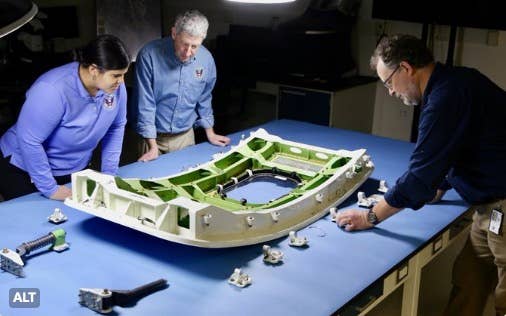NTSB Says Bolts Likely Missing When MAX Door Plug Blew Off
An NTSB preliminary report has confirmed earlier media reports that four key bolts securing a mid emergency exit door (MED) plug on an Alaska Airlines flight last month were likely…

An NTSB preliminary report has confirmed earlier media reports that four key bolts securing a mid emergency exit door (MED) plug on an Alaska Airlines flight last month were likely missing when the door flew off in flight over Oregon. It also suggests the plane was delivered to Alaska without the bolts. "Overall, the observed damage patterns and absence of contact damage or deformation around holes associated with the vertical movement arrestor bolts and upper guide track bolts in the upper guide fittings, hinge fittings, and recovered aft lower hinge guide fitting indicate that the four bolts that prevent upward movement of the MED plug were missing before the MED plug moved upward off the stop pads," the report says. It also says the damage to the door plug "was consistent with the MED plug translating upward, outboard, and aft during the separation."
Investigators also went through manufacturing records that showed the plug was removed at the Boeing factory in Renton, Washington, to allow technicians from Wichita-based Spirit Aerosystems to repair five damaged rivets in the door frame. Those four bolts had to be removed for the plug to be removed. The report also includes photos taken to accompany the repair work that showed the plug back in place but without at least three of the four bolts not in place. One of the bolt locations was obscured by insulation. The report also noted that the door plug was made by Spirit's Malaysian factory and that the incident "adversely affected [the airplane's] structural strength" so the damage was "substantial."
The report says the NTSB's search of the manufacturing records showed no evidence that the door plug was removed at any time after the rivet repair at the Renton factory. That debunks a theory that circulated for a time that a crew installing Wi-Fi equipment in the aircraft had removed the door for access to the location of their gear. The techs who install the Wi-Fi equipment showed investigators how they do it and said they never take the door plug out. More interviews are planned with workers at Spirit and Boeing as the investigation continues. The full report follows:






